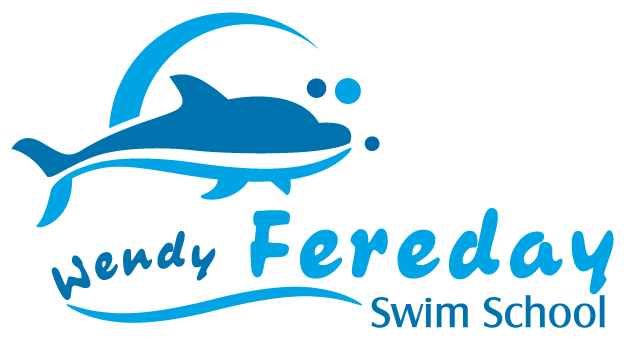Children must master four skills to be able to swim: submersion, buoyancy, balance and breath control. The “big hairy monster” in all of this is submersion. Being underwater can be scary. The job of professional swim instructors is to break this process into steps, remove the fear and give children the tools and confidence they need to be comfortable above and below the water.
Here are some “homework” lessons for parents—tips that will help prepare babies for the sensations they will experience during swim class so they are less likely to become fearful or panicky in the pool. With all of these suggestions, keep it fun. Make it a game. Give children the skills to enjoy it. And be positive! Your attitude makes all the difference.
Shower early and often with young children. They will learn to ignore the splashing and become conditioned to holding their breath as the water hits their head. Get them in the shower as soon as the umbilical cord falls off. Start by letting the water splash over the baby’s back. Then let the water spray the back of the head, then splash over the head, then over the face. Use your damp hand and fingers to create the sensation of water over the baby’s face.
Newborns and babies up to about 6 months old can get in the tub with you. To help a baby float on his or her back and enjoy freedom of movement not possible on land, hold the baby behind the shoulders and cup the head so the baby can’t turn his or her mouth into the water. This is really fun for babies; some “startle” with their arms and legs, kicking and splashing themselves. Others lie peacefully as you sway them in the water. They get used to the water and leave the bath relaxed and worn out from using their full range of motion. If at first you don’t have a happy baby in the tub, keep working on it. It’s worth the effort!
When babies are old enough to sit on their own, drag a damp washcloth from the back of the head, over the head and across the eyes, nose and mouth areas three times in a row, until the child doesn’t startle. Use a sprinkling can or a soaked washcloth to drizzle water over the child’s head on the count of three. Repeat this three times.
Blowing bubbles helps babies learn that they are in control of their breath. Teach children to blow bubbles on the cue of “one, two, three, blow!” Try long bubbles, slow bubbles, quiet bubbles…variations teach them to relax. Once they are comfortable doing this with their noses above the water, encourage them to try with their noses under the water, then eyes in the water. Or have them try blowing a ping pong ball across the tub.
Allow children to feel what buoyancy is all about. Fill the tub until the water is under their armpits as they sit, so they can feel the water lift them. If they begin to slide under, sit them back up. They quickly learn to put their hands down to right themselves. Let them explore the bottom of the tub with their face in the water. Put toys on the bottom. Soon your child will be spending tub time on his or her tummy, face in the water, bubbles blowing and bottom in the air. Get towels ready for your floor!
– by Kathy Hubbard co-founder and owner of Hubbard Family Swim School.

